If you’re a guitarist who loves experimenting with different sounds and tones, then finding the best guitar reverb pedal is a must. Adding depth and ambiance to your playing, a reverb pedal can take your guitar sound to a whole new level. But with so many options available, choosing the right one can be overwhelming. That’s why this ultimate guide is here to help you navigate through the world of guitar reverb pedals. From understanding different types of reverbs to considering your budget and preferred features, this guide will provide you with all the essential information you need to make an informed decision and find the perfect reverb pedal for your musical journey.
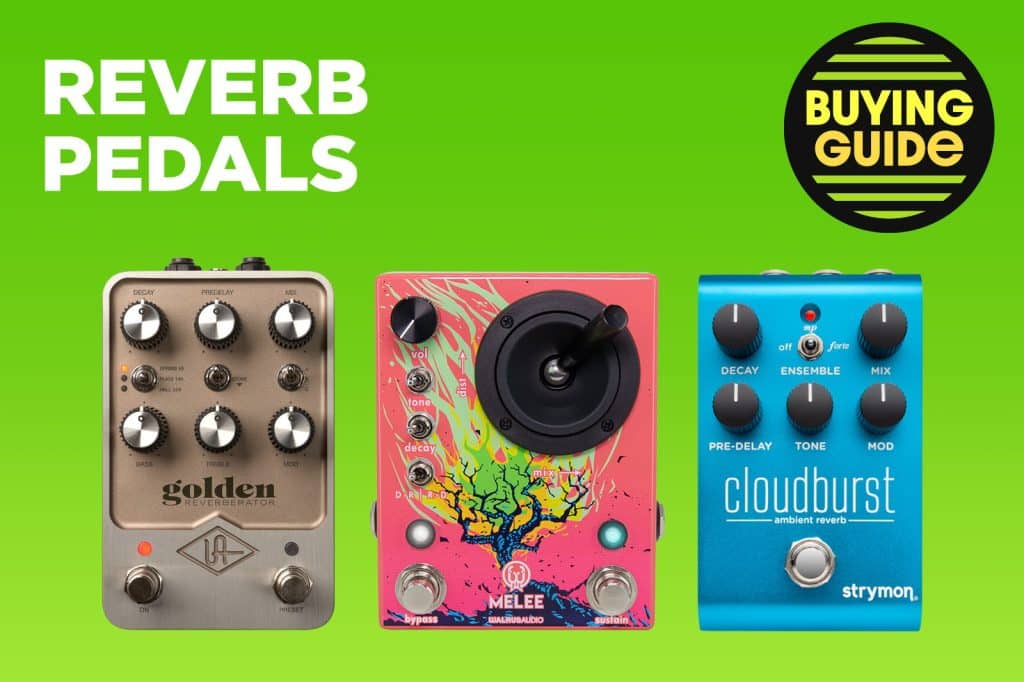
Factors to Consider
When it comes to choosing the best guitar reverb pedal for your needs, there are several factors that you should consider. These factors will help you narrow down your options and find the perfect pedal to enhance your guitar playing experience.
Price
The first factor to consider when looking for a guitar reverb pedal is the price. Reverb pedals can vary greatly in price, from affordable options to high-end, pricier models. It’s important to set a budget for yourself and determine how much you are willing to spend on a pedal. Keep in mind that more expensive doesn’t always mean better quality, so it’s important to find a pedal that offers great value for your money.
Type of Reverb
There are various types of reverbs available in guitar pedals, each offering a distinct sound and ambiance. The most common types of reverb include Spring Reverb, Plate Reverb, Hall Reverb, Room Reverb, and Modulated Reverb. Understanding the differences between these reverb types can help you choose the one that suits your musical style and preferences.
Controls
Another important factor to consider is the control features of a reverb pedal. Different pedals offer different control options, allowing you to adjust parameters such as pre-delay, decay time, blend/mix, tone, modulation, EQ controls, trail mode, tap tempo, presets, and expression pedal inputs. Having control over these parameters can greatly enhance your ability to shape the reverb effect to your liking.
Size and Portability
The size and portability of a reverb pedal may be important considerations depending on your needs. If you are a gigging musician or have limited space on your pedalboard, you may prefer a compact pedal that can easily fit alongside other pedals. On the other hand, if you have plenty of space or are looking for more control options, a standard-sized pedal or even a multi-effects unit may be more suitable.
Pedalboard Compatibility
Considering pedalboard compatibility is crucial when choosing a reverb pedal. Pedals can vary in their compatibility with pedalboard setups, so it’s important to ensure that the pedal you choose is compatible with your existing gear. Factors such as true bypass vs buffer, power supply requirements, and interfacing with other pedals should all be taken into account.
Different Types of Reverb
Understanding the different types of reverb available in guitar pedals can help you choose the one that best suits your musical style and preferences. Each type of reverb offers its own unique sound and character, allowing you to create the perfect ambiance for your playing.
Spring Reverb
Spring reverb is a classic type of reverb that emulates the sound of reverberations in a spring. It is known for its vintage sound and is commonly found in old guitar amplifiers. Spring reverb can add a touch of warmth and character to your tone, making it perfect for vintage-inspired music genres.
Plate Reverb
Plate reverb simulates the reverberations of sound in a steel plate. It offers a smooth and even decay, creating a rich and lush ambiance. Plate reverb is often favored by studio engineers for its ability to add depth and dimension to recordings.
Hall Reverb
Hall reverb is designed to replicate the sound of playing in a large concert hall or auditorium. It creates a spacious and immersive reverb effect, adding depth and grandeur to your sound. Hall reverb is commonly used in genres such as classical, jazz, and ambient music.
Room Reverb
Room reverb emulates the natural reverberations that occur in a small room or studio. It provides a more intimate and natural-sounding reverb effect compared to other types. Room reverb is versatile and can be suitable for a wide range of music genres.
Modulated Reverb
Modulated reverb adds a modulation effect to the reverb signal, creating a swirling and dream-like atmosphere. The modulation can be in the form of chorus, flanger, or other modulation effects. Modulated reverb is great for adding depth and movement to your sound.
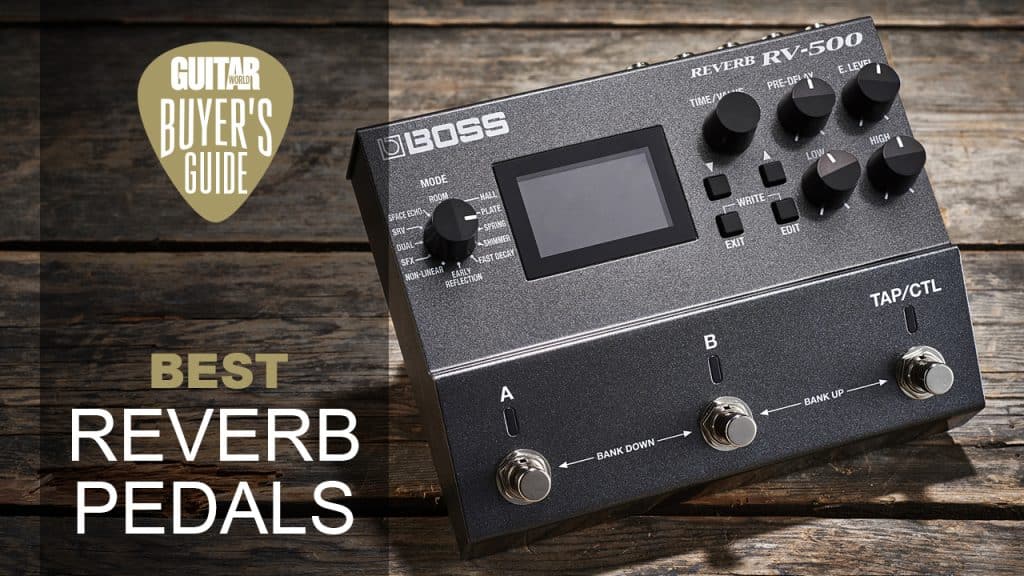
Control Features
The control features of a reverb pedal play a significant role in shaping the reverb effect to your liking. Understanding these control features will help you choose a pedal that offers the level of control you desire.
Pre-Delay
The pre-delay control allows you to set the time between the original signal and the onset of the reverb effect. Increasing the pre-delay can create a sense of space or distance in the reverb effect.
Decay Time
The decay time control determines how long the reverb effect lasts. Adjusting the decay time can make the reverb sound shorter or longer, depending on your preference.
Blend/Mix
The blend or mix control adjusts the balance between the dry and wet signals. Increasing the wet signal adds more reverb effect, while decreasing it allows more of the original guitar signal to come through.
Tone
The tone control shapes the frequency response of the reverb effect. It allows you to darken or brighten the reverb sound to suit your taste.
Modulation
Some reverb pedals offer modulation controls, allowing you to add a modulation effect to the reverb signal. Modulation can add movement and depth to the reverb effect.
EQ Controls
Certain reverb pedals feature EQ controls that allow you to shape the tonal characteristics of the reverb effect. These controls can be used to boost or cut specific frequencies, helping you achieve the desired sound.
Trail Mode
Trail mode determines whether the reverb effect continues to fade out naturally after you turn off the pedal or if it abruptly stops. Having the option of trail mode can be beneficial if you want a smoother transition when engaging or disengaging the reverb effect.
Tap Tempo
Tap tempo allows you to manually set the tempo of the reverb effect by tapping a footswitch. This feature is particularly useful if you want to synchronize the reverb with your playing or other time-based effects.
Presets
Some reverb pedals come with preset options that allow you to save and recall different reverb settings. This can be beneficial if you regularly switch between different reverb sounds during your performances or recording sessions.
Expression Pedal Input
An expression pedal input allows you to connect an external expression pedal to control certain parameters of the reverb effect in real-time. This can provide you with greater control over the reverb effect during performances.
Size and Portability
The size and portability of a reverb pedal are important considerations, especially if you have limited space on your pedalboard or need a portable setup for gigging or traveling.
Compact Pedals
Compact pedals are small in size and are perfect for those looking to save space on their pedalboard. They generally have a smaller footprint but still offer a wide range of control features. Compact pedals can easily fit alongside other pedals and are lightweight and portable, making them ideal for musicians on the go.
Standard-Sized Pedals
Standard-sized pedals offer more control options and often have a larger footprint compared to compact pedals. These pedals may take up more space on your pedalboard but can provide a more comprehensive and versatile reverb effect. Standard-sized pedals are usually more robust and built for heavy use.
Multi-Effects Units
Multi-effects units are a popular choice for musicians who want to have access to a wide range of effects, including reverb, in a single unit. These units often feature various reverb types and control options, allowing you to dial in your desired sound. Multi-effects units are larger in size and can be a practical solution for those looking for a comprehensive effects solution.
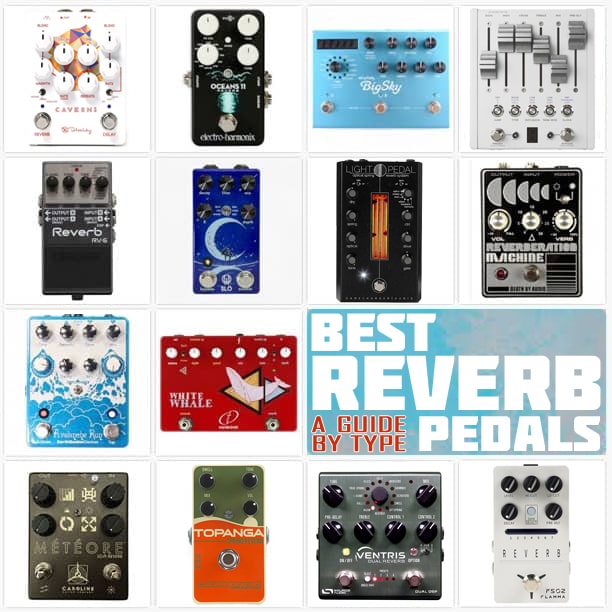
Pedalboard Compatibility
Ensuring pedalboard compatibility is vital when choosing a reverb pedal to integrate into your existing setup.
True Bypass vs Buffer
One consideration is whether the pedal offers true bypass or buffer functionality. True bypass means that the pedal does not interfere with the true, unprocessed signal when it’s disengaged. This can be beneficial if you have a long signal chain, as it helps preserve your original tone. On the other hand, a buffer can maintain the integrity of your signal and prevent tone loss even with long cable runs.
Power Supply
Power supply requirements should also be taken into account when choosing a reverb pedal. Some pedals may be powered by batteries, while others require a separate power supply or can be powered through an external power source. Ensure that the pedal you choose is compatible with the power supply options you have available.
Interfacing with Other Pedals
If you plan to use the reverb pedal alongside other effects pedals, it’s important to consider how well it will integrate with your existing signal chain. Some pedals may have input/output options that allow for easy connectivity, while others may require additional adapters or cables. Ensure that the pedal you choose can be easily incorporated into your setup without any compatibility issues.
Popular Guitar Reverb Pedals
There are several popular guitar reverb pedals on the market that have gained acclaim for their sound quality and versatility. Here are some of the top choices:
Strymon BigSky Reverb
The Strymon BigSky Reverb is known for its superb sound quality and wide range of reverb types. It offers numerous control options and presets, allowing you to create the perfect reverb sound for any musical style. The BigSky Reverb is highly regarded among professional musicians and is a top choice for those seeking a high-end reverb pedal.
Eventide Space Reverb
The Eventide Space Reverb is another top contender in the world of reverb pedals. It offers a vast selection of reverb algorithms, including various studio-quality reverbs. The Space Reverb also features a wealth of control options, presets, and the ability to connect an expression pedal for even more creative possibilities.
Boss RV-6 Reverb
The Boss RV-6 Reverb is a popular choice among guitarists who want a reliable and versatile reverb pedal at an affordable price. It features a range of reverb modes, including Spring, Hall, Plate, and Modulate. The RV-6 also offers simple and intuitive controls, making it a great option for beginners and experienced players alike.
TC Electronic Hall of Fame 2
The TC Electronic Hall of Fame 2 is known for its exceptional sound quality and versatility. It offers a wide variety of reverb types and control options, including TonePrint technology which allows you to customize and load custom reverb presets. The Hall of Fame 2 is a great choice for players who want extensive control over their reverb sound.
Empress Reverb
The Empress Reverb is a highly regarded pedal that offers a wealth of control options and a vast array of reverb algorithms. It features a clear and intuitive interface, making it easy to dial in your desired reverb sound. The Empress Reverb is known for its exceptional sound quality and is favored by many professional guitarists.
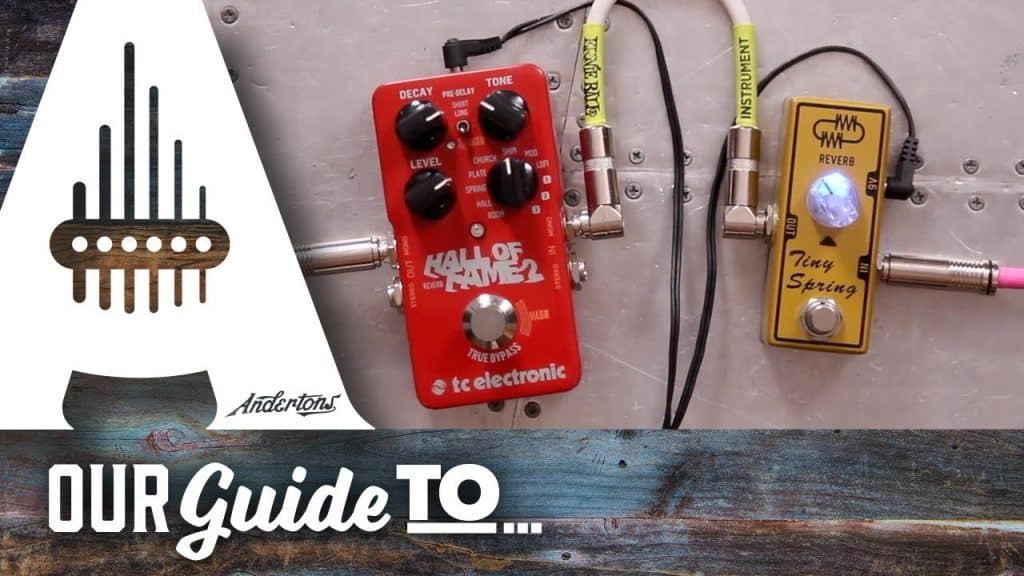
Budget-Friendly Options
If you’re on a tight budget but still want to enhance your guitar sound with reverb, there are several affordable options available. Here are some budget-friendly reverb pedals that offer great value for the price:
TC Electronic Skysurfer
The TC Electronic Skysurfer is a compact and affordable reverb pedal that offers three versatile reverb modes: Spring, Plate, and Hall. It features simple yet effective controls, allowing you to easily shape your reverb sound. The Skysurfer is a great choice for beginners or guitarists on a budget who want quality reverb without breaking the bank.
Mooer Shimverb Pro
The Mooer Shimverb Pro is a compact multi-effects pedal that offers a range of reverb types and control options. It features a wide range of ambient and atmospheric reverbs, making it perfect for experimental and shoegaze music. The Shimverb Pro also offers stereo inputs and outputs, adding to its versatility.
Digitech Polara
The Digitech Polara is beloved for its lush and high-quality reverbs at an affordable price point. It offers seven reverb types, including Plate, Room, Spring, Hall, Modulated, Halo, and Reverse. The Polara also features straightforward controls and the option to load presets via a pedal or MIDI.
Electro-Harmonix Holy Grail Nano
The Electro-Harmonix Holy Grail Nano is a compact reverb pedal that provides excellent reverb sounds at a budget-friendly price. It offers three reverb types: Spring, Hall, and Flerb (a unique flanged reverb). The Holy Grail Nano is simple to use, making it a great choice for those new to using reverb pedals.
Donner Verb Square
The Donner Verb Square is a compact and affordable reverb pedal that offers a range of reverb types and control options. It features seven reverb modes, including Room, Hall, Church, Spring, Plate, Studio, and Mod. The Verb Square is perfect for those on a budget who still want access to a variety of quality reverb sounds.
Tips for Trying a Pedal
Trying out a pedal before making a purchase is highly recommended to ensure it meets your expectations and complements your playing style. Here are some tips to help you make the most of testing out a reverb pedal:
Research and Reviews
Before trying a pedal, do some research and read online reviews to get an idea of its sound quality, features, and how it performs in different musical contexts. This will help you narrow down your options and make a more informed decision.
In-Person Testing
Whenever possible, visit a local music store or attend guitar gear expos where you can try out different reverb pedals. Bring your guitar and any other effects pedals you plan to use with the reverb pedal to simulate your typical setup. Take your time to explore and experiment with the various controls and reverb types to get a feel for the pedal’s sound and usability.
Borrowing or Renting
If you have friends or fellow musicians who own the reverb pedal you’re interested in, consider asking if you can borrow it or rent it for a short period. This will allow you to try out the pedal in the comfort of your own playing environment and see how well it integrates with your existing gear.
Buying Used
Buying a used reverb pedal can be a cost-effective way to try out different models without breaking the bank. Many musicians sell their pedals in excellent condition, often at a fraction of the original price. Just make sure to test the pedal thoroughly before making a purchase and buy from reputable sellers.
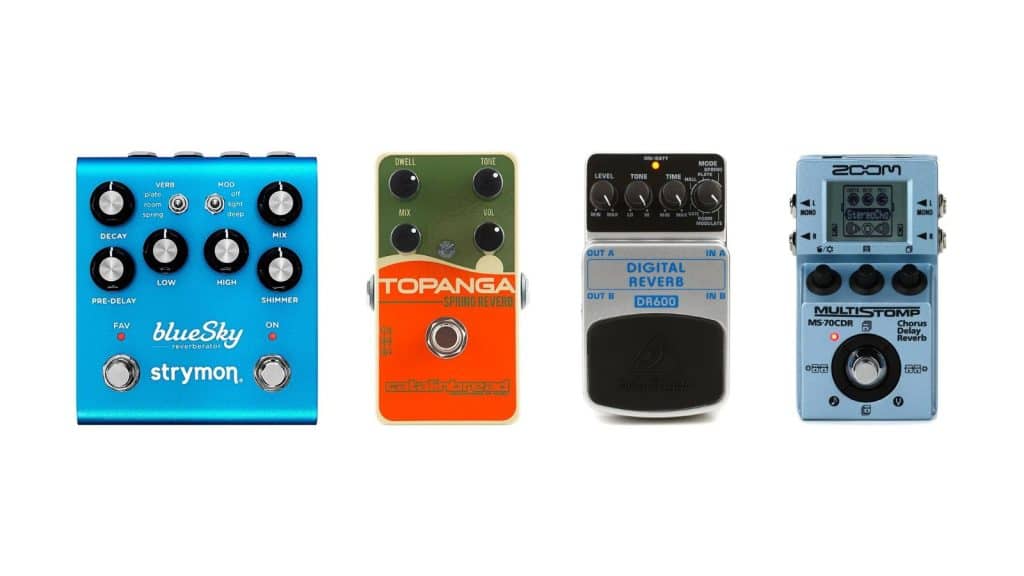
Popular Reverb Pedal Brands
Several brands have established themselves as leaders in the reverb pedal market, consistently delivering high-quality and innovative products. Here are some of the most popular and respected reverb pedal brands:
Strymon
Strymon is known for its premium-quality pedals that offer unrivaled sound quality and versatility. Their reverb pedals, such as the BigSky and Flint, have gained a reputation for their studio-quality reverbs and extensive control options.
Eventide
Eventide is renowned for its high-end studio processors and effects pedals. Their reverb pedals, including the Space and H9, are celebrated for their professional-grade reverb algorithms and extensive sound-shaping capabilities.
Boss
Boss is a well-established brand that offers a wide range of effects pedals, including highly regarded reverb pedals like the RV-6 and the RV-500. Boss pedals are known for their reliability, durability, and excellent value.
TC Electronic
TC Electronic is acclaimed for its wide array of affordable yet high-quality pedals. Their reverb pedals, such as the Hall of Fame 2 and Skysurfer, offer great sound and control options at a budget-friendly price point.
Electro-Harmonix
Electro-Harmonix, or EHX, is a legendary brand in the world of effects pedals. Their reverb pedals, such as the Holy Grail Nano and Oceans 11, are known for their unique and innovative reverb sounds that have helped shape the sound of many iconic recordings.
Conclusion
Choosing the best guitar reverb pedal involves considering factors such as price, type of reverb, controls, size and portability, and pedalboard compatibility. Understanding the different types of reverb, including Spring, Plate, Hall, Room, and Modulated, can help you find the one that suits your musical style. The control features of a reverb pedal, such as pre-delay, decay time, blend/mix, and modulation, offer you the flexibility to shape your reverb sound. Considering the pedal’s size and portability, as well as its compatibility with your pedalboard setup, can make a difference in the convenience of your setup. Exploring popular reverb pedals and budget-friendly options can give you a starting point for your search. Trying out pedals through research, in-person testing, borrowing or renting, or buying used can help you make an informed decision. And finally, considering reputable reverb pedal brands like Strymon, Eventide, Boss, TC Electronic, and Electro-Harmonix can ensure you’re choosing a pedal from a trusted manufacturer. With comprehensive knowledge and consideration of these factors, you’ll be able to find the perfect reverb pedal to enhance your guitar playing.






